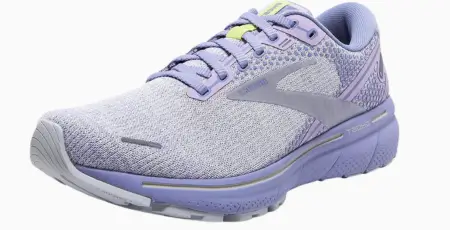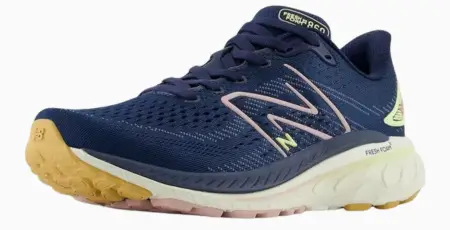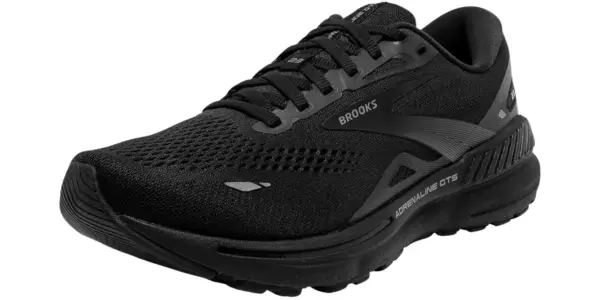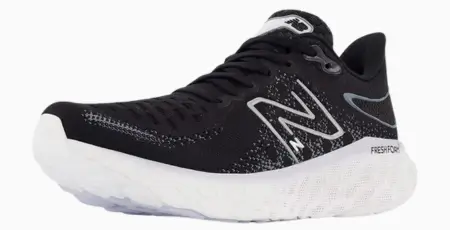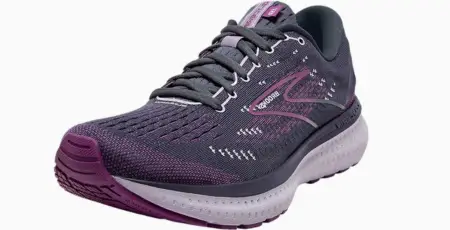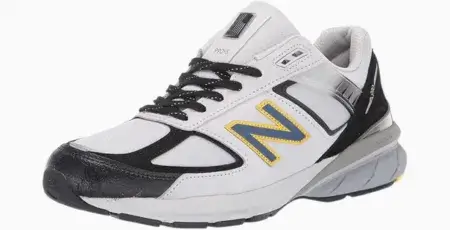Brooks vs New Balance: Guide to Finding The Right Running Shoe
Last Updated: January 01, 2025 | Author: Jake Thompson
In the world of running shoes, Brooks and New Balance stand as beacons of excellence, yet their philosophies and executions often run in parallel lanes.
As a writer with a penchant for the finer details of athletic footwear, I've come to admire both brands for their distinctive approaches to crafting a runner's essential companion.
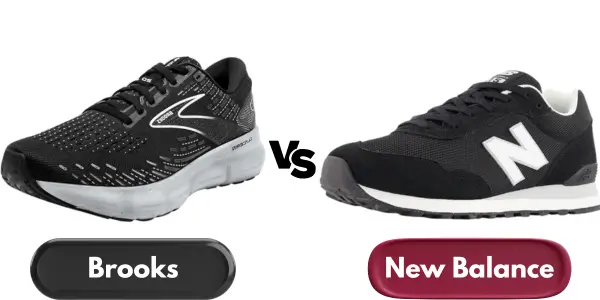
Brooks, with its singular dedication to the run, offers an experience honed by a commitment to the sport, while New Balance provides a broader spectrum of choices, catering to an array of athletic needs with a personalized touch.
I've found myself at the crossroads of this duo's offerings, weighing the merits of Brooks' revered adaptability against the bespoke-like fit that New Balance boasts.
In the subsequent discussion, I'll be peeling back the layers of these two competitors, revealing what sets each apart and, perhaps more intriguingly, where one might edge out the other in the tight race for a runner's loyalty.
Table of Contents:
- Key Takeaways
- Table: Brooks vs New Balance
- Pros & Cons
- Brand History and Focus
- Durability
- Comfort
- Cushioning
- Performance
- Fit and Sizing Options
- Design
- Upper Construction
- Midsole & Outsole Features
- Stability and Support Features
- Our Recommendations
- Final Verdict
- Frequently Asked Questions
Key Takeaways
- - Both Brooks and New Balance offer a wide range of running shoes for all levels, foot types, and training preferences.
- - New Balance is known for offering a wide range of wide sizes and extra-wide widths, making it a great option for runners with wide feet or bunions.
- - Brooks exclusively designs running shoes and focuses heavily on research and design, with a particular emphasis on accommodating individual running gaits.
- - New Balance provides maximalist running shoes with thicker midsoles for a plush ride, while Brooks uses different foam materials for the midsole to offer specific cushioning experiences.
Table: Brooks vs New Balance
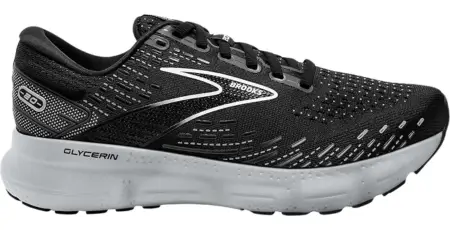
|
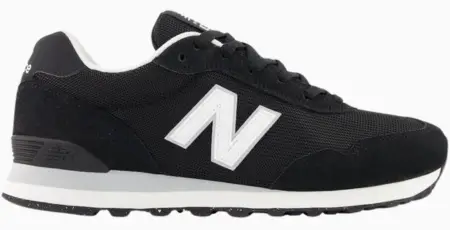
|
|
|---|---|---|
| Criteria | Brooks | New Balance |
| Product Range | Specializes in running shoes and apparel. | Offers a wide range of athletic and casual shoes, apparel, and accessories. |
| Technology | Known for cushioning and stability technologies like DNA Loft and GuideRails. | Features technologies like Fresh Foam and ABZORB for comfort and performance. |
| Target Audience | Primarily focused on serious runners. | Caters to both athletes and casual wearers. |
| Brand Reputation | Highly regarded in the running community for quality and performance. | Renowned for quality, comfort, and width options; strong presence in both athletic and lifestyle segments. |
| Special Features | Emphasis on biomechanics and fit, with a commitment to sustainability. | Offers a variety of width sizes; significant efforts in sustainability and domestic manufacturing (USA). |
Pros & Cons
Brooks Running Shoes
Pros:- - Specialized in running with advanced design
- - Wide toe box for comfort
- - Durable with various cushioning options
- - Limited to running shoes
- - Not ideal for very narrow feet
New Balance Running Shoes
Pros:- - Wide range of sizes, great for wide feet
- - Versatile for sports and casual wear
- - Good for overpronation with stability features
- - Some models are less durable
- - Less running-focused than Brooks
Brand History and Focus
Delving into the storied histories of New Balance and Brooks offers a century-old dedication to athletic footwear, with each brand carving out a distinct focus in the running shoe industry.
Since Brooks developed its first running shoe, the company has channeled all its resources into improving performance for runners, with advancements such as adaptive cushioning and biomechanically engineered support.
On the other side, New Balance makes its mark with a broader approach. While they do offer specialized new balance running shoes, their portfolio spans various athletic needs, accommodating a spectrum of foot shapes and sizes. Their dedication is evident in their wide and extra-wide options, catering to those with unique fit requirements.
Both running shoe brands boast a rich heritage in the field. New Balance has been around since 1906, initially providing arch supports, while Brooks, established in 1914, began its journey with ballet and bathing shoes before finding its niche in running.
Their respective focuses reflect a commitment to the running community, ensuring that every stride taken is supported by decades of innovation and a deep understanding of athletes' needs.
Durability
While both shoe brands have a storied history of crafting shoes tailored to runners' needs, it's their approach to durability that often becomes a deciding factor for athletes seeking long-lasting footwear. When I evaluate the durability of a running shoe, I consider how well it holds up over countless miles and various terrains. Brooks and New Balance both recommend that runners replace their shoes after 300 to 500 miles to ensure maximum performance and injury prevention.
As a high-mileage runner, I pay close attention to the fit of the shoe, the quality of the materials, and the traction of the outsole. These factors directly impact the shoe's longevity. Both brands have developed technologies and materials that specifically address durability, ensuring that the shoes withstand the rigors of regular use. For instance, Brooks is renowned for its resilient midsole foams, and New Balance for its durable rubber compounds.
Ultimately, the choice between Brooks and New Balance for durability comes down to individual needs and preferences. But it's reassuring to know that both brands have a firm commitment to providing runners with shoes that can go the distance, offering both durability and comfort in their designs.
Comfort
When it comes to comfort, cushioning is a pivotal aspect to consider when choosing running shoes.
Brooks utilizes technologies like DNA LOFT and BioMoGo DNA for a personalized cushioning experience.
New Balance's Fresh Foam and FuelCell are designed for softness with minimal weight.
It's essential to consider these cushioning materials as they directly influence the comfort level during runs and long-term wear.
Cushioning
Considering the importance of cushioning for overall foot comfort during runs, both brands have engineered their shoes with advanced foam technologies to ensure a plush and responsive ride. Brooks' DNA Loft and New Balance's Fresh Foam are prime examples, both designed to deliver peak performance with every heel-to-toe transition. The midsole cushion in these shoes isn't just about softness; it's about the energy return that propels you forward, reducing fatigue over long distances.
| Feature | Brooks | New Balance |
|---|---|---|
| Cushion Technology | DNA Loft | Fresh Foam |
| Energy Return | Balanced | High |
| Midsole Feel | Plush yet Responsive | Soft and Protective |
| Ideal for | Long Runs | Varied Workouts |
| Heel-to-Toe Transition | Smooth | Effortless |
I've found that choosing a cushioned shoe from either brand can significantly affect my running comfort and performance.
Performance
In terms of performance, both New Balance vs Brooks running shoes are engineered with advanced technologies to enhance the runner's experience, providing support, cushioning, and stability tailored to different kinds of runners and their unique needs.
Brooks utilizes innovative cushioning materials like BioMoGo DNA and DNA Loft Foam, which adapt to a runner's stride, weight, and speed for a personalized feel. This adaptive cushioning ensures a balance between softness and responsiveness, offering a comfortable and efficient ride.
New Balance, on the other hand, incorporates its Fresh Foam midsole in many of its performance shoes. This technology provides a plush, yet stable platform that delivers a smooth ride. Additionally, their FuelCell lineup features a high-rebound foam designed to propel runners forward, enhancing responsiveness and speed.
Both brands prioritize pronation control, with Brooks offering their GuideRails technology to keep excess movement in check without overcorrecting your stride. This allows for a natural running motion while providing the necessary support. In contrast, New Balance employs various design features to stabilize the foot and guide it through a proper running gait.
For those interested in how different shoe technologies enhance athletic performance, our article on how much height do basketball shoes add provides an intriguing perspective on footwear design and its impact on sports performance.
Fit and Sizing Options
While both shoe brands excel in performance with their advanced cushioning and stability features, it's equally important to consider how their fit and sizing options can impact my running experience.
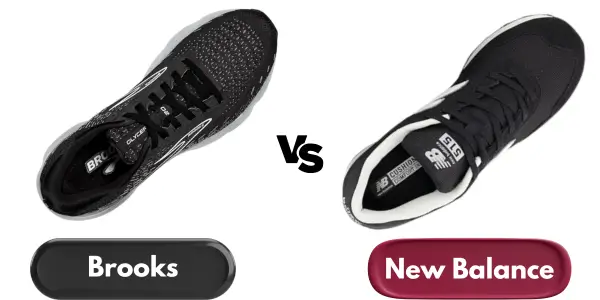
Brooks running shoes are renowned for their wider toe box, accommodating natural foot splay and making them suitable for runners like me who may have wide feet or bunions. The fit of Brooks shoes feels generous without compromising on support, particularly around the midfoot and heel.
New Balance stability, on the other hand, is also commendable. They offer shoes for a variety of foot widths, including standard, wide, extra-wide, and even narrow options. This is a boon for runners who struggle to find the right width in other brands. My visits to a running store often highlight New Balance's commitment to inclusivity in fit, catering to those who are typically left out by other manufacturers.
Both brands provide extensive sizing options, but if I've exceptionally wide feet, New Balance might edge out Brooks in terms of available width choices. Regardless, it's clear that both brands are dedicated to equipping runners with the precise fit needed for comfort and performance.
Design
When it comes to the design aspects of Brooks running shoes vs New Balance, the focus often shifts to the upper construction, as well as the features of midsoles and outsoles.
I've noticed that Brooks tends to use engineered mesh and 3D Fit Print technology for a structured yet breathable upper, while New Balance frequently employs their Hypoknit material for a snug, supportive fit.
Both brands integrate advanced foam technologies and rubber compounds in their midsoles and outsoles, aiming to balance cushioning, responsiveness, and durability in their shoe designs.
Upper Construction
Upper construction, a critical aspect of shoe design, reflects the brands' commitment to both function and style, with Brooks and New Balance utilizing distinctive technologies and materials to enhance the runner's experience. When I'm considering a Brooks shoe or new balance shoes, I always pay close attention to the upper construction, as it greatly influences fit and comfort.
Here's a quick comparison:
| Brooks Shoe Features | New Balance Shoe Features |
|---|---|
| Engineered mesh for breathability | Hypoknit for dynamic support |
| 3D Fit Print for strategic stretch | Synthetic overlays for structure |
| Wider toe box for natural movement | Wider toe options for fit versatility |
| Comfort collar for Achilles support | Bootie construction for snug fit |
| Lightweight uppers for speed | Mesh material for a lightweight feel |
The upper construction of these shoes ensures that as a runner, I can find both the snugness and space, particularly around the toe box, needed for long runs or quick sprints.
Midsole & Outsole Features
Delving into the midsole and outsole features of Brooks and New Balance running shoes, it's evident that both brands employ advanced technologies to enhance performance and comfort for runners.
Brooks's midsoles often include their proprietary DNA AMP material, which is engineered to provide an optimal balance of cushioning and energy return. This is particularly beneficial for runners needing arch support and those who experience overpronation. Their stability models are equipped with GuideRails technology, which helps to keep excess pronation in check by providing motion control.
New Balance, on the other hand, addresses pronation with a variety of stability shoes designed to offer a supportive ride. They focus on ensuring that the midsole and outsole cater to runners with different gait patterns, offering a stable platform and targeted arch support.
Stability and Support Features
Stability and support features are crucial for runners who need extra motion control. Both Brooks and New Balance have developed unique technologies to address this need. As a keen observer of the running shoe industry, I've noticed that these companies approach stability through different biomechanical lenses.
Brooks, primarily a running shoe company, offers the Adrenaline GTS model, which exemplifies their approach to stability. They utilize GuideRails technology, a system that's designed to keep excess movement in check rather than drastically correct overpronation. It's about guiding the foot without over-correcting, maintaining the runner's natural stride while providing support.
On the other hand, New Balance, which started as an arch support company, leans more toward robust stability and support features that aim to correct overpronation directly. Their shoes often feature a stiffer construction and a wider base to provide a solid platform for runners. This is particularly beneficial for those with flat feet who require substantial arch support.
Both companies understand that the right amount of stability can be pivotal. They integrate these features without compromising the natural biomechanics of running, ensuring that each runner can find the balance between support and freedom of movement in their footwear.
Our Recommendations
Brooks vs New Balance for Plantar Fasciitis: Brooks Ghost vs New Balance 880
Brooks Ghost 14
The Brooks Ghost 14 shoes are an excellent choice for those suffering from Plantar Fasciitis. They offer superior cushioning and support, which helps alleviate heel pain. The responsive midsole and smooth transition ensure comfortable strides, making them ideal for both everyday wear and running.
NB Fresh Foam X 880 v 13
The New Balance Fresh Foam X 880v13 stands out as a top choice for Plantar Fasciitis sufferers. Its plush Fresh Foam cushioning provides exceptional heel support and comfort, reducing strain on the plantar fascia. The shoe's stable and smooth ride makes it suitable for various activities, from walking to running.
New Balance vs Brooks Walking Shoes: Brooks Adrenaline vs New Balance 1080
Brooks Adrenaline GTS 23
The Brooks Adrenaline GTS 23 excels as a walking shoe, offering an ideal blend of support, cushioning, and stability. Its GuideRails support system ensures a comfortable and natural stride, reducing excess movement. The responsive cushioning adds comfort, making it perfect for long walks and everyday use.
The Brooks Adrenaline GTS 23 offers support, cushioning, and stability, ideal for walking. For a comparison with another Brooks model, see Brooks Ghost vs Adrenaline.
New Balance Fresh Foam X 1080v12
The New Balance Fresh Foam X 1080v12 is a flagship neutral trainer, perfect for walking with its highly cushioned and comfortable design. It features a durable, soft upper and a balanced cushioning system for a smooth ride, ideal for long distances and daily use. However, it may feel heavy and less responsive for fast paces.
Brooks vs New Balance Running Shoes: Brooks Glycerin vs New Balance 990v5
Brooks Glycerin 19
The Brooks Glycerin 19 offers a smooth and comfortable ride, ideal for easy running. It features a soft DNA Loft midsole, providing plush cushioning and a protective feel. While it's not highly responsive, its comfortable upper and durability make it a great choice for long, relaxed runs.
New Balance 990v5
The New Balance 990v5 is praised for its comfort and stability, featuring a blend of pigskin suede and mesh for durability and breathability. It's a neutral running shoe suitable for various activities beyond running, including everyday wear, thanks to its supportive design and cushioning. The shoe has a roomier toe box compared to previous versions and maintains the high-quality build expected from the New Balance 990 series.
For more insights, compare it with its sibling in our New Balance 990 vs 993 review.
Final Verdict
In the race for the perfect running shoe, Brooks shoes vs New Balance each sprint ahead in their unique ways. Brooks, with its laser-focused dedication to running, excels in specialized performance and adaptive cushioning, making it the ideal choice for the passionate runner. New Balance, on the other hand, stands out for its versatile range and exceptional fit options, especially for those with wider feet, blending comfort and performance across various athletic activities.
Whether you’re seeking a shoe that understands your dedicated running stride or one that adapts to a range of athletic needs, both brands cross the finish line with distinction, offering quality and innovation tailored to your running journey.
Frequently Asked Questions
1. What are the key differences between New Balance and Brooks running shoes?
Both are two renowned brands in the running shoe industry. While both offer a wide range of running shoe models catering to runners of all types, their designs differ. New Balance is known for its balance of comfort and support, often preferred by those with high arches or requiring orthotics. Brooks, on the other hand, focuses on stability and cushioning, making them ideal for traditional running shoe enthusiasts.
2. How do Brooks and New Balance cater to specific types of runners?
Both brands offer shoes designed for various needs. New Balance provides a broad spectrum of shoes, from trail shoes to those suited for high arches, and often incorporates orthotic-friendly features. Brooks tends to focus more on traditional running shoe designs, offering models that emphasize cushioning and support, making them a go-to for many runners seeking reliability and comfort.
3. Are New Balance or Brooks better for trail running?
When it comes to trail running, both brands have specific models designed for off-road terrain. However, the type of shoe best for you depends on your personal needs. New Balance trail shoes tend to be versatile and durable, suitable for a variety of conditions. Brooks trail shoes often focus more on stability and cushioning, offering extra comfort for rugged terrains.
4. Can I use New Balance or Brooks shoes for sports other than running, like ballet or swimming?
While Brooks and New Balance specialize in running shoes, they are not suitable for activities like ballet or swimming. Ballet slippers and bathing shoes are specifically designed for those activities, offering the required flexibility and water compatibility that running shoes like those from Brooks and New Balance do not provide.
5. How should I decide between Brooks and New Balance for my running needs?
Deciding between these two brands often comes down to personal preference and specific needs. Consider factors like the type of running you do (trail vs. road), your foot type (e.g., flat feet, high arches), and whether you need shoes compatible with orthotics. Both brands offer a variety of models, so it's worth trying on a few to see which feels best. Remember, the right shoe should provide a balance of comfort, support, and functionality for your running style.
Share this:

